From a Samurai’s Garden to Kyoto Lantern Festival

A Samurai Home you want to live in
It is our last day in Kanazawa and the Rain God continues to do his duty, this time with more enthusiasm. Luckily for us, we are at the gates of the Nomura Samurai Family House at the Nagamachi district before his arrival.
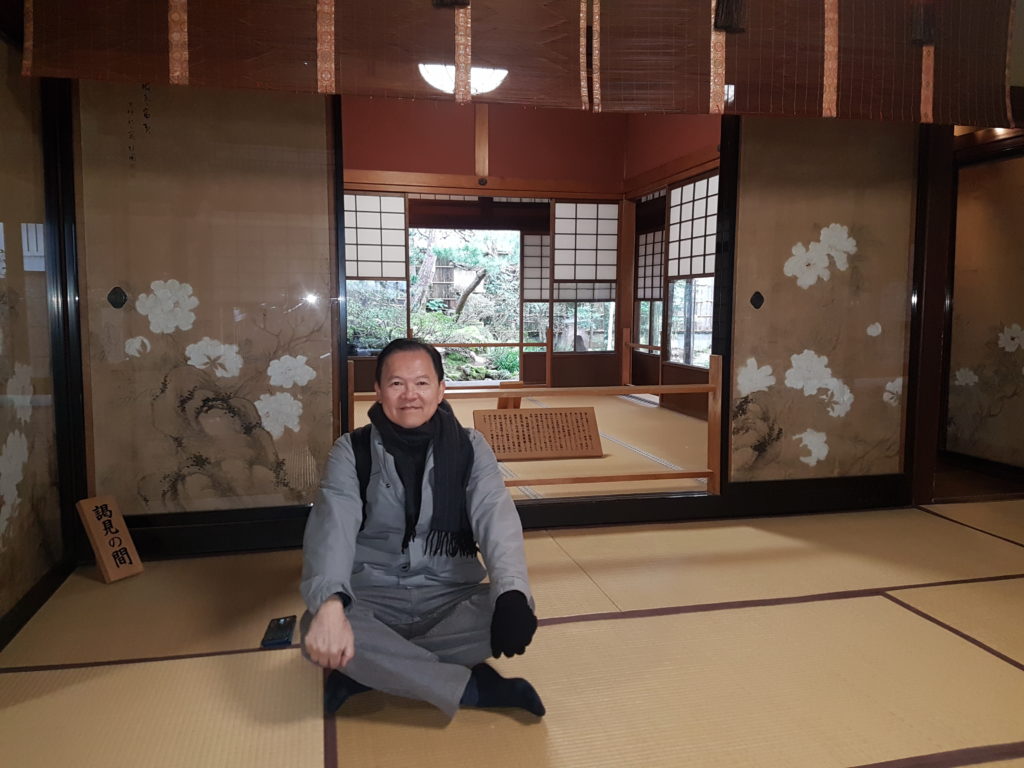
Originally part of the estate of the family of Nomura Denbei Nobusada (a senior official to the region’s feudal lord during the Edo period), the house fell into hard times after the collapse of feudalism during the Meiji Restoration in the mid-19th Century. The house and its garden were last reconstructed by a new anonymous owner in 1941.*
The house is as elegant as the best of any traditional Japanese living spaces, but what makes it stand out is its gorgeous garden. If there is ever a house that lives in the shadow of its garden, this must be it! Don’t get me wrong. It is still a fine house even without its garden—serene, refined, dignified, with a classic understated beauty that fits perfectly in the cool crisp air. The sliding doors and windows create cosy spaces illuminated by soft warm light diffusing through the paper plastered lattice screens. But once you catch a glimpse of the garden outside through openings and slits of space, you will be irresistibly drawn towards it.
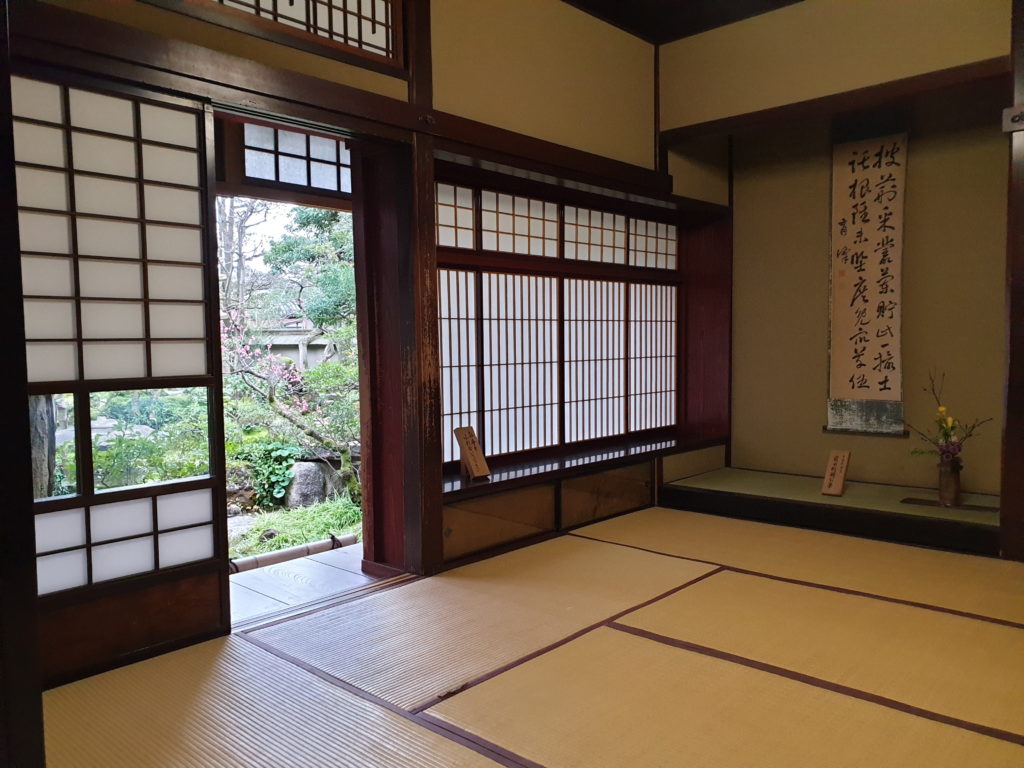
A home garden you don’t want to leave
The garden is not very big as my eyes can survey all there is, but the variety of views I see as my eyes shift from one spot to another makes the garden larger than it is. One moment, you gaze at the stone bridge above the still stream of water framed by frizzy thin twigs and delicate pink flowers and, just shifting your eyes slightly the next moment, a pagoda appears in view, nestled in bushes in various hues of green. What we think of as worthy of more than a lingering glance in nature is collected and summarised in this extraordinary home garden.
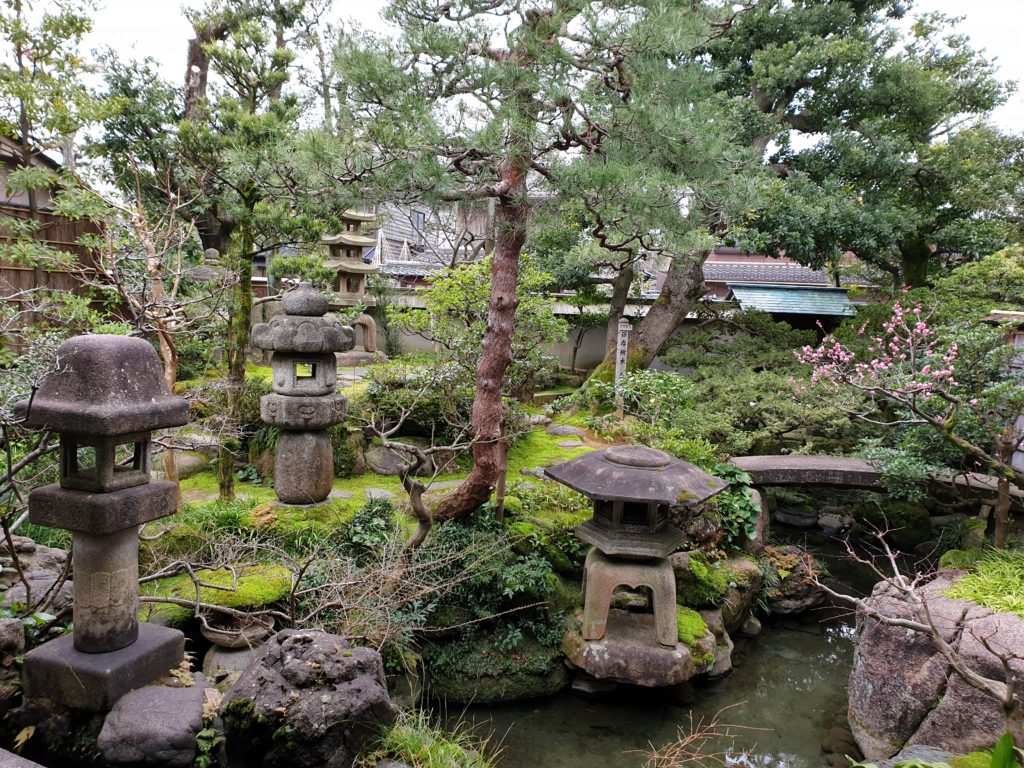
Sitting on the verandah and taking in the artful blending of nature’s gifts can soothe souls and repair broken spirits. One wonders how the samurai owner in the past could lift his butt, tear himself from this mesmerising scene and get to work every morning! Perhaps he lazes around at home until his daimyo calls him to do his bidding. After all, what good is a samurai in those days who does not use his sword now and then?
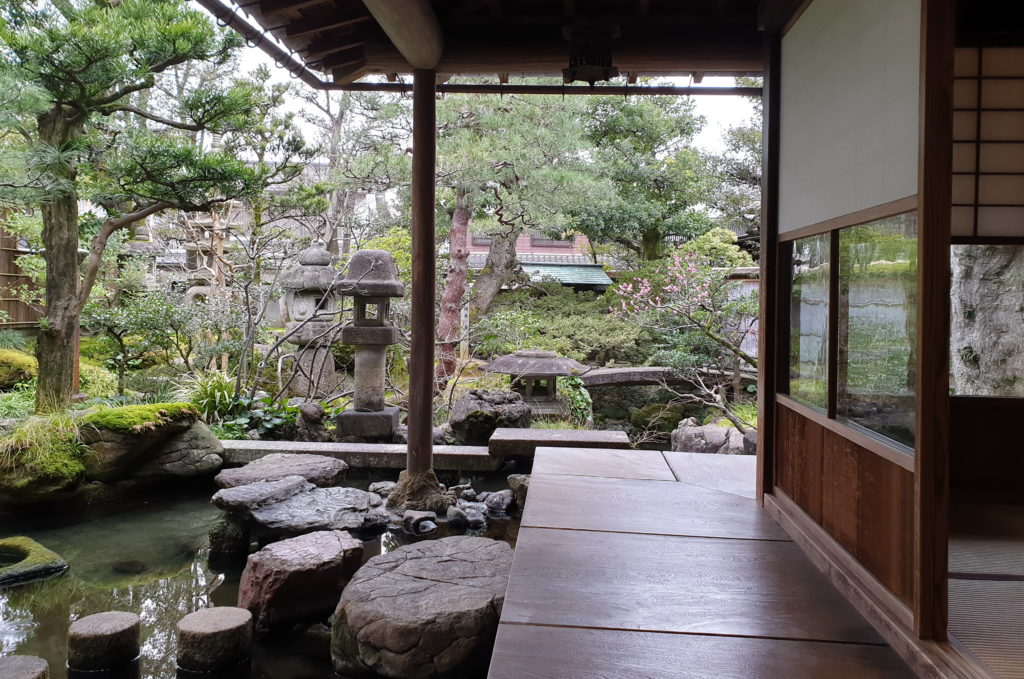
An appreciation letter to a samurai
There is an intriguing exhibit inside the house that shows a bit of the macabre nature of life in that era. Just look at this handwritten letter below. The elegant calligraphic characters are pleasingly balanced by the oversized signature, obviously composed by a writer with the sensibilities of an artist.
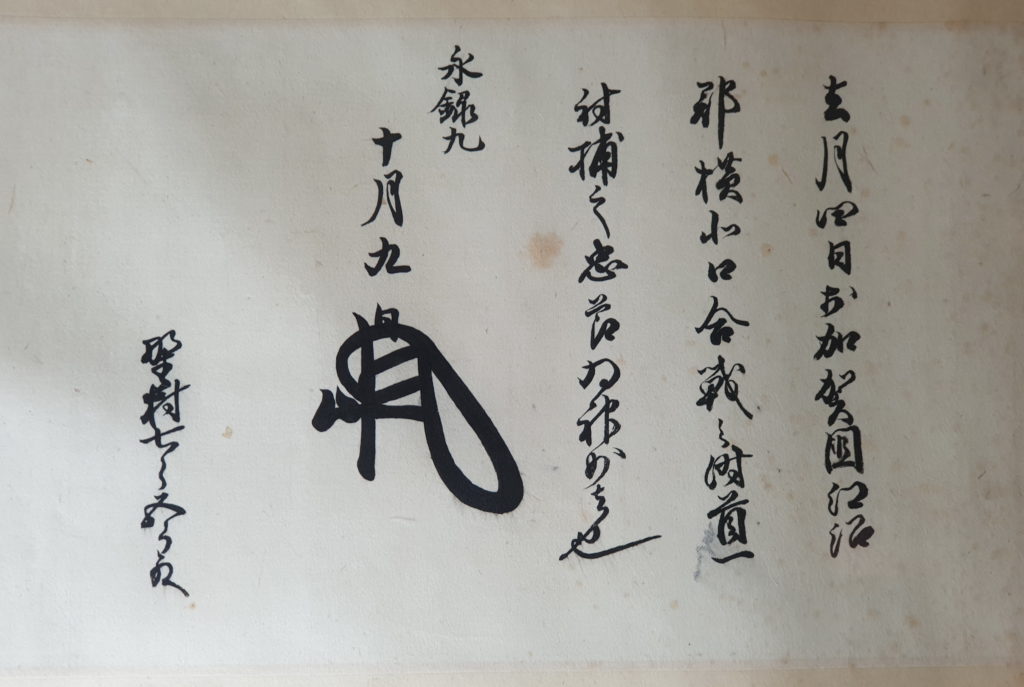
Here is the explanatory plate:

I reproduce the English text below in case the plate is too small to read:
| To Mr Nomura Shichirogoro A Thank you Letter from YOSHIKAGE ASAKURA (Echizen) We appreciate that you worked so hard to kill one high ranked soldier on the fourth of last month at the Yokokitaguchi Battle in Kaganokuni Enumagun. We are very happy that you brought us his head. October 9th, 1566 (Eiroku Ninth) |
Reading the translation of the letter gives me a momentary shiver and put a slight damper on my blissful mood after enjoying the garden. Such is life in Edo, or for that matter, anywhere during that period—you live and die by the sword. How does one reconcile the act of violence on human lives and the compassion, empathy and sensitivity needed in contemplation of the beauty of nature?
To Kyoto Hanatouro Festival
In mid afternoon, we continue our journey to Kyoto, glad to get rid of the rain tailing us everywhere in Kanazawa. We look forward to exploring Kyoto tonight, it being the last night of the Spring Hanatouro Festival when temples and paths in the Higashiyama district will be lighted up with lanterns and other forms of illumination. I read somewhere that this event was started in 2003 to attract tourists and visitors to nighttime Kyoto.
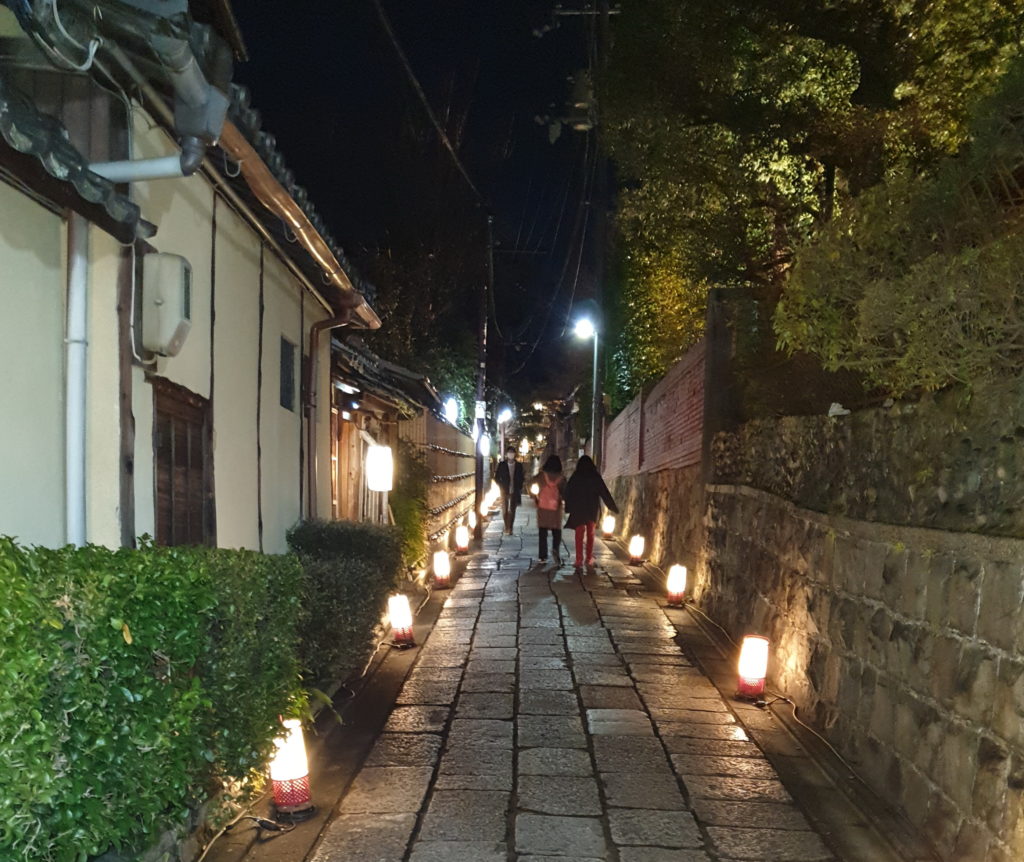
We start our night walk near Shoren-in Temple, towards Kiyomizu Temple five kilometres away. There are not many people on the streets, and I begin to worry whether I got the date or the place wrong. Soon, we see small lanterns lining the path on both sides ahead, like cat eyes for pedestrians, and breathe a sigh of relief. We pass by Shoren-in Temple, its pair of thousand-year-old camphor tree shines eerily from reflecting floodlight on the ground. It is a scene we remember well from our last visit to the temple a few years ago.

Ikebana in the outdoors
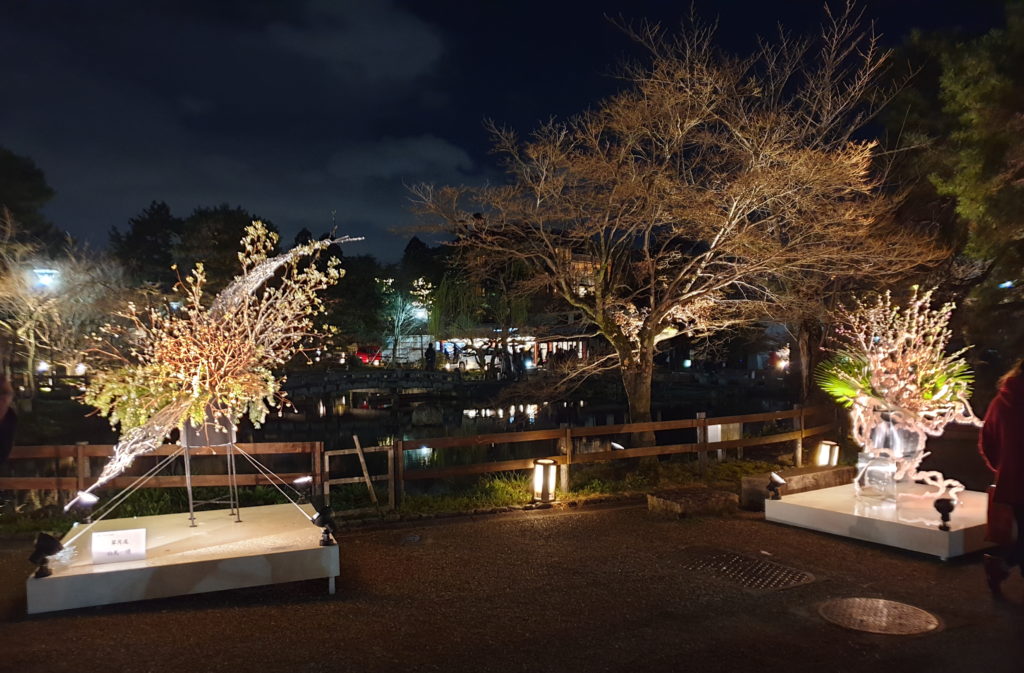
We follow the path with the faintly glowing lanterns to the ikebana exhibition featuring works from a large-flower arrangement competition in Maruyama Park. The large-sized ikebana are more like lighted floral sculptures, somewhat overbearing and a bit too elaborate for my eyes to take in. I suppose the harsh outdoor environment requires a sturdy and robust structure to keep a large fragile display intact. I personally prefer smaller sized ikebana pieces that express the essence of beauty and its transience in a more immediate and simpler manner. But, what do I know about ikebana—not being steeped in its aesthetics and history? Perhaps it is like a neophyte hearing a Bruckner symphony and a Chopin nocturne for the first time.
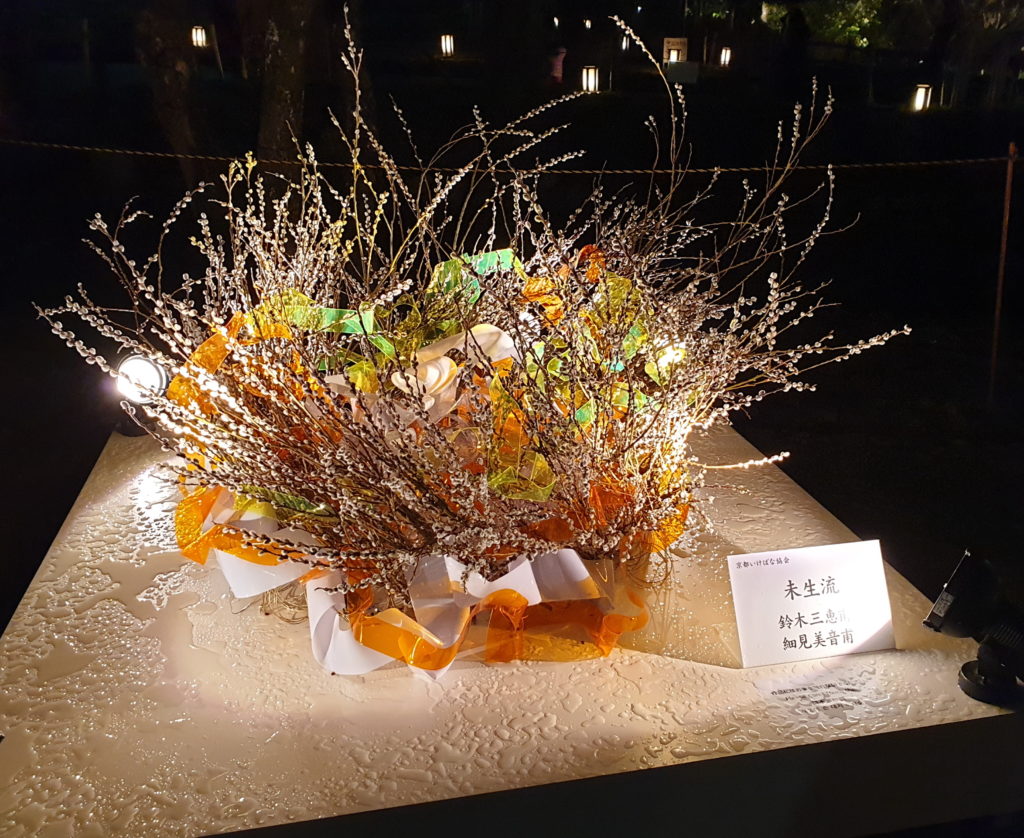
Thinking of the samurai’s garden at night
It is about 9 pm and we are near to Kodaji Temple, probably in the middle of the five-kilometre route. It is likely we are not going to make it to the end. The crowd is now getting thicker, the mood more festive and illumination of all kinds more abundant—just the right condition to linger here longer. The weather is also quite pleasant, perfect for strolling, but it has been a long day since we set off to the Nomura Samurai House in Kanazawa in the morning.
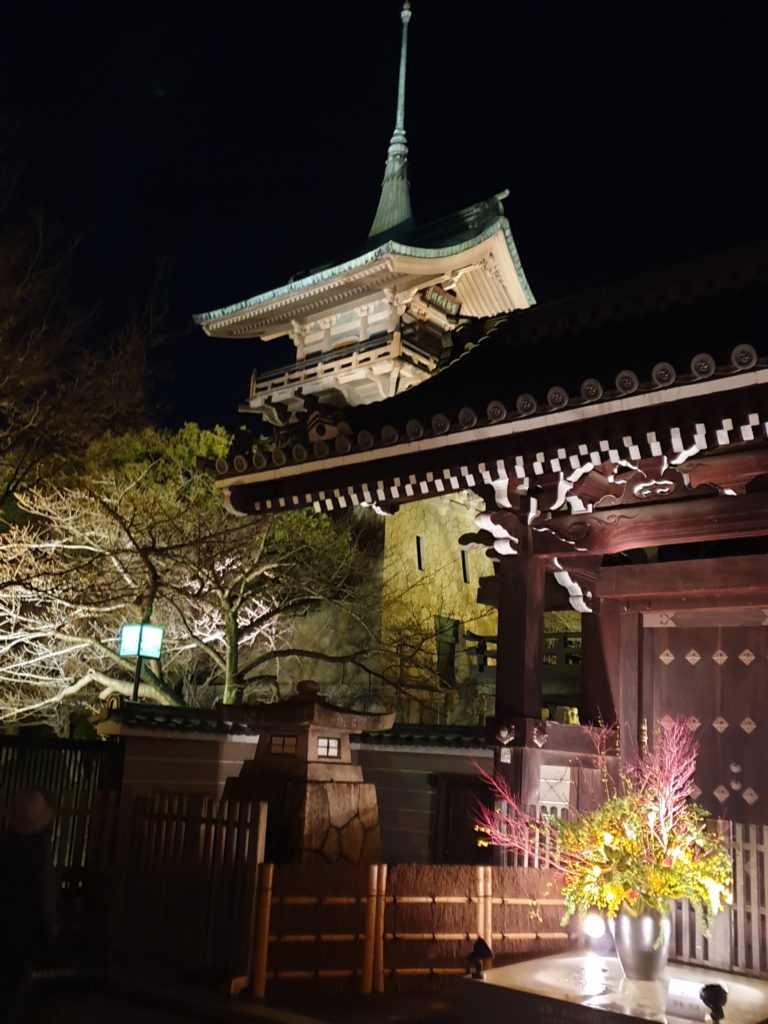
As we beat a retreat to our hotel, the memory of the exquisite garden of the samurai house still lingers. It must be very dark there now, its glory hidden until the sun shines on it again. If the house is a living space and not a tourist attraction, the dark night would also be a time for it to come on its own, to regain its prominence and escape the shadow of its more ravishing companion garden.
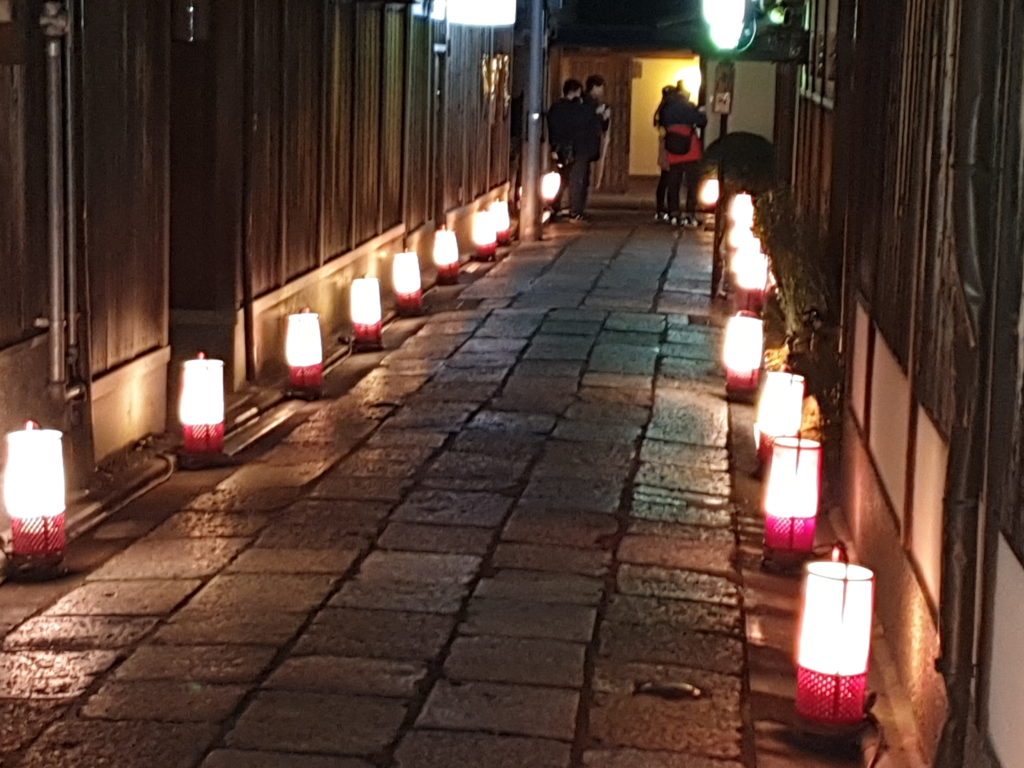
NOTES:
* Mansfield, S. (Jun 30, 2013). Small is beautiful in a Kanazawa garden. https://www.japantimes.co.jp/life /2013/06/30/environment/small-is-beautiful-in-a-Kanazawa-garden/#.XZFmgm5uKUk